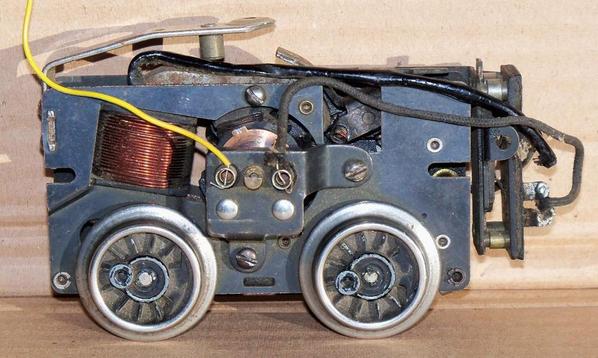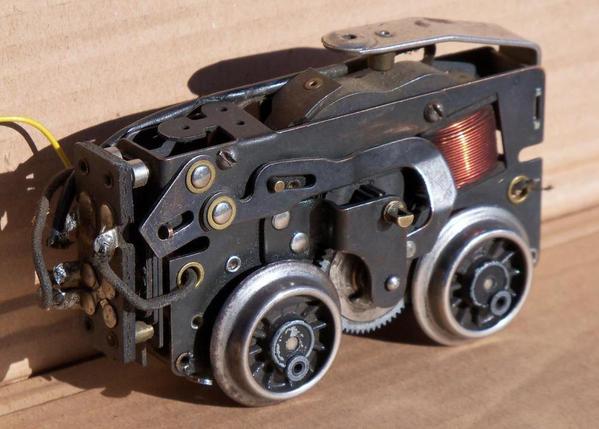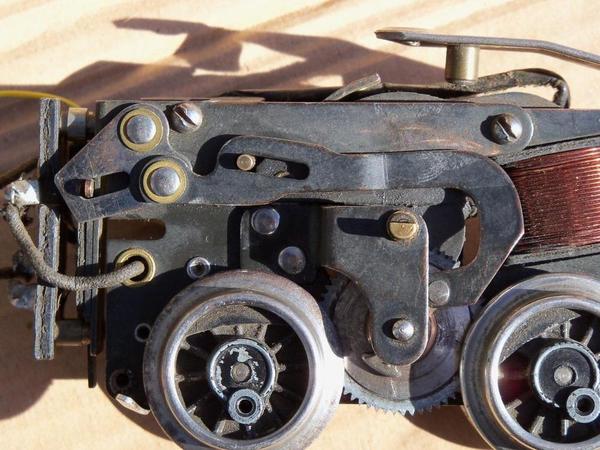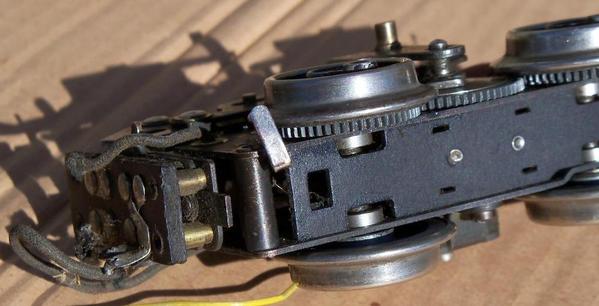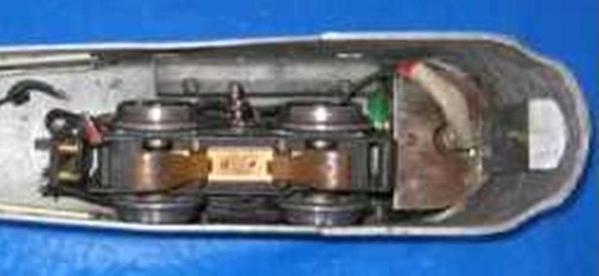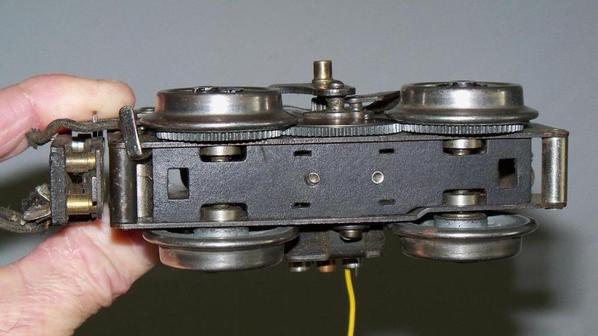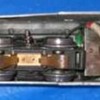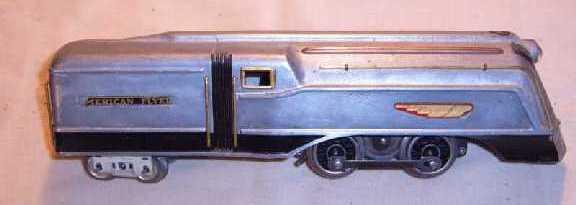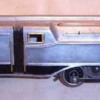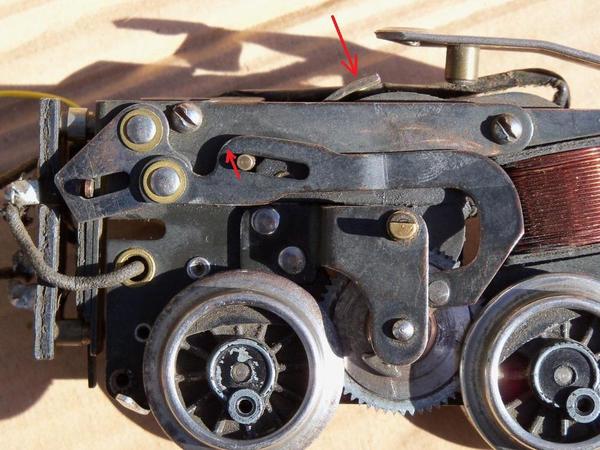This prewar loco chassis was obtained by a friend of a friend, in a box of misc parts bought online. It doesn't have a shell or any ID and we have no info about it.
What makes this item unusual is that it has a reversing switch and mechanism which is apparently intended to be triggered by a trackside trip. The trackside trip moves a mechanism which then engages a friction-drive catch-hook on the main drive gear, so that the geared drive from the motor moves the reversing switch on the back of the chassis. When the motor reverses, the mechanism-finger is bumped up to clear the catch-hook.
To try to explain this another way: the trackside trip does not directly move the reversing switch, but it moves a mechanism which uses the power from the motor drive train to positively move the reversing switch. The reversing switch changes the polarity to the field coils (only), which are wired in series with the armature.
The trackside trip links to a lever above the motor, which must be a reset or an alternate manual trip.
Above the motor is a mounting arm with a threaded screw hole directly above the center point between the drivers, as if it might be a pivot point.
I am supposing that this chassis predates the introduction of E-units. Why else have so much mechanical complexity to move the reversing switch on the engine? This motor runs but we haven't run it on track because the center-rail pickups are missing.
If anyone knows the story behind this chassis, please enlighten us !
The second and third photos show the mechanical linkage on the side of the motor, from the drive gear to the reversing switch.
The last photo shows the reversing switch at left and the track trip arm near center.




